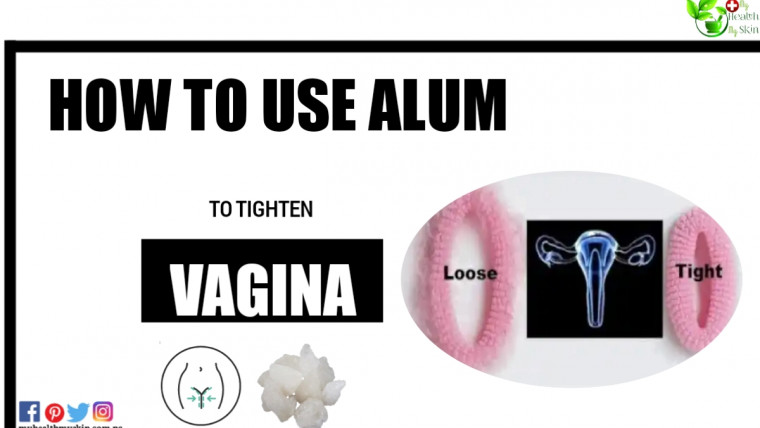Over time, both women and men lose strength and muscle tone in the pelvic floor, which can lead to long-term problems such as urinary or fecal incontinence. To see more articles on Women’s Health click here.
And it is that the pelvic floor is responsible for supporting the weight of the viscera and preventing the loss of urine and feces, so it is important that these muscles have the strength and tone necessary to perform their functions.
The easiest way to strengthen this area is with the famous Kegel exercises.
Kegel exercise was created by Arnold Kegel in the 1940s. Hence working on the pelvic floor muscles are based on voluntary and isolated contraction of the floor muscles, pelvic and its subsequent relaxation”.
The benefits of kegel exercises are many and very diverse. Kegel exercises help us:
To prevent and treat pelvic floor pathologies such as urinary and fecal incontinence, gas incontinence or prolapses. Although these pathologies predominantly affect women, men are not exempted from suffering from some of them throughout their lives.
In the case of women, the work of the pelvic floor becomes especially important at the time of pregnancy and postpartum, due to the hormonal and structural adaptations that occur in pregnancy.
Prevent and treat the symptoms that appear in menopause, at which time the woman suffers from an estrogen deficit that will lead to a decrease in the collagen of the tissues with its consequent weakening, less turgidity of the tissues, a sensation of vaginal dryness.
To rehabilitate the pelvic floor after pelvic surgery, be it a prostatectomy (man), hysterectomy (woman), or any other type of intervention that affects that area.
Furthermore, as indicated by Juan Antonio Barca, president of the Urogynecological and Obstetric Physiotherapy Commission of the Professional College of Physiotherapists of the Community of Madrid (Cpfcm), it can improve defecation function”. But that is not all.
Did you know that having a toned pelvic floor can help a lot during sexual intercourse?
And it is that, keeping the pelvic floor in shape, helps to have more pleasant sexual relations and increase the intensity of orgasms.
From a sexual point of view, for both sexes, performing these exercises helps to improve orgasm and a greater maintenance of the erection since it improves the state of all the perineal muscles, which favors arousal.
Kegel exercises help in controlling and working the pelvic floor which helps sexual relations to be better.
In Addition, kegel exercises benefits sexually in men by enhancing the erection, delaying ejaculation and improving lubrication and sensitivity in women.
According to experts from the Andalusian Society of Family and Community Medicine (Samfyc), in men, these exercises improve sexual function and can prevent and treat premature ejaculation.
In women, on the other hand, they help to improve the toning of the vaginal muscles and improve friction during penetration, which facilitates reaching orgasm, also increasing the sensitivity of the area.
A healthy pelvic floor leads to a rewarding sex life, but also the other way around.
That is, the fact of having sex alone already has a positive effect on the pelvic floor and therefore many specialists advise having an active sexual life to have this healthy area.
And it is that, the excitement and orgasm increase the blood supply toning the muscles and tissues.
In addition, the involuntary and rhythmic contractions of the muscles that are experienced during orgasm exercise them, contributing to the reduction of the vaginal opening that could be found to be dilated due to conditions such as hypotonia or traumatic childbirth.
Likewise, orgasmic contractions also strengthen the involuntary musculature, which accounts for 80% of the pelvic floor tissues.
On the other hand, penetration and orgasm prevent vaginal atrophy both in menopause and after a hysterectomy (removal of the uterus) due to stimulating massage of the penis (or a sex toy) on the pelvic floor.
Only If Done Right
It should be borne in mind that, in the specific case of women, doing the exercises incorrectly or with too much force can lead to the vaginal muscles becoming too tight and cause pain during sexual intercourse, according to the experts at Samfyc.
That is why it is important to know how to do them well.
As Barca points out, with an expert who guides the exercises according to each case, He defined how to do kegel exercises.
In his viewpoint, Kegel should not be specified for everyone, it is important to assess individually.
And is that, not all exercises are for everyone, not all people know how to do them correctly.”
The kegel exercises is something that is very important especially in patients who have had or have incontinence problems or related to the pelvic floor area and in pregnant women“.
Barca is against “coffee for all” in this type of solution and the indiscriminate distribution of brochures to pregnant women in health centers with general information on what to do to strengthen the pelvic floor, without knowing how each patient form.
In his viewpoint “you have to simply explain how to do the exercises. After delivery there is a high incidence of pelvic floor problems.
There are women who lose proprioception, so if the exercises are not monitored it is possible that the patient has an inversion in the perineal order, which makes it difficult to perform the exercises correctly, as they do not know how to distinguish between pushing or contracting, which makes that the clinical picture worsens”.
For this reason, there are more and more personalized treatments for each patient.
It should not be forgotten that the success of these exercises in all the aforementioned fields will depend on the proper practice of the technique and on a disciplinary compliance with the exercise program.

Kegel Exercises for Women Step by Step
Step one: find your pelvic muscles
Although, it may seem easy to find this area and know how it contracts and relaxes, but the reality is that not everyone knows how to do it.
According to data from Samfyc, more than 40% of patients do not easily locate the pelvic muscles.
There are people who take longer to learn to locate it than others, as Barca indicates.
Some patients have a difficult time getting it right even with the help of professionals.
Little by little they succeed, but if not, sometimes physiotherapists use electrotherapies to contract the muscle through stimuli.
This is used when the person does not have the capacity to contract.
Apart from these very specific patients, to find out if a woman does it well,
Barca has a trick: Insert the tip of a finger into the vagina to see if the contraction is carried out correctly and with the force upwards and not downwards”.
Luque uses other formulas: We can place the palm of one hand on the perineum, in order to feel the contraction and relaxation in it.
In addition, if we close our eyes when performing them, we will increase our concentration”.
“Also we can use a reflector or a mirror, in which we can see perfectly how our perineal orifices close, and how the perineum conceals when contracting.
Throughout the process, it is important not to perform parasitic contractions, that is, contractions of other parts that are not the pelvic floor, such as the buttocks or the legs,” says Barca.
And, as Luque points out, among the most common errors is that of “contracting the adjacent muscles (buttocks, abdomen or adductors).
In some cases we also find that the patient pushes out the muscles when contracting, generating hyperpressure”.

How to do Kegel Exercises for Women
Kegel exercises consist of strengthening the pelvic floor through voluntary contractions performed regularly and appropriately.
“We have to contract the pelvic floor muscles in a voluntary and isolated way and then relax it,” says Luque, who advises his female patients that they make the gesture of wanting to hide that pelvic floor muscles, as if they wanted to suck it in.
In the case of men, the physiotherapist in her consultations tells them to “imitate the gesture of stopping the urine, holding back a gas or making the gesture of raising the penis.
“It is important to emphasize the word imitate. In no case should patients cut off the stream of pee to perform the exercises.
Kegel exercises are not about repeatedly cutting off the stream of urine.
This is important because doing this can cause retrograde urination and urinary tract infections.
When the technique has been learned, the exercises will focus on performing the contractions with different rhythms and durations, to work the different types of muscle fibers existing in the muscles,” says Luque.
Regarding the best posture to do them (standing, sitting, lying down, Luque advises “to start in a lying position, either on your back or on your side, and with your legs bent so that there is no tension in the lumbar area.
They would also be good positions to start “in quadruped or squatting, supporting our arms and chest in some support (bed, sofa, fitball)”.
Although, Barca remembers that “it is best to do them standing up when you already have control of the contraction” because gravity takes its toll and it is the posture in which we spend most of our time.
Doing the standing exercises provides a greater effort in the area when contracting the pelvic floor, so it will be more effective, although it will depend on each patient”.
Another piece of advice from Luque is to do the exercises “at a time when we are relaxed and focused exclusively on this work.
Regarding the use of Chinese balls to exercise the area instead of exercises, the experts at Samfyc recall that inserting conical-shaped devices with different weights into the vagina and contracting the pelvic muscles to prevent them from coming off can help.
Although, they indicate that they have not been shown to have better results than performing Kegel exercises.
These tools can be an option for women who deem it appropriate.”
Kegel Exercises: Daily Routine
As for the routine that can be performed to achieve good results, Luque explains that“ it is not the same to perform them for prevention than when there is an established pathology.
Each person is different, and it is very important to do a prior assessment by a professional before making a specific recommendation”.
From Samfyc they recall that “there is no established protocol on the duration of contractions, the rest time or the number of repetitions or series suitable for everyone.
In general, it could be effective to perform 3 sets of 8-12 contractions held for 6-8 seconds.
Other exercise options recommended by experts are slowly contract by pulling the muscles in as hard as possible, hold the tension for 5 seconds and relax after 10 seconds and repeat this sequence 10 times morning, noon and night.
The same can be done quickly by contracting and relaxing without waiting.
Increase progressively to 15 contractions (some slow and others fast) three times a day, then to 20 contractions three times a day, to continue with 20 contractions four times a day plus an extra 20 when possible”.
In addition to the pelvic floor, Luque believes that it is important to “integrate these Kegel exercises within the abdominal-perineal complex.
For this, he considers it essential to also work on other areas of the body such as the core, the buttocks, the lumbar muscles and the diaphragm.
Depending on the state from which we start and the objective we have.
We can complement them with hypopressive work, perineal massage, breathing exercises, myofascial release or work with electrotherapy”.







